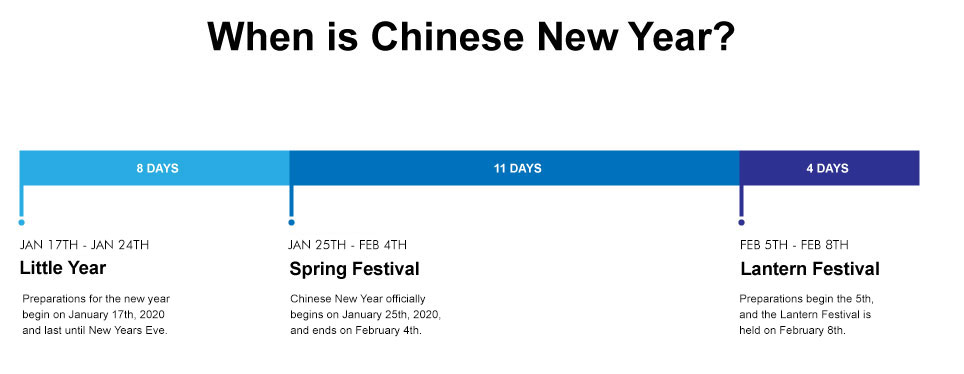Although the Chinese New Year of Spring Festival is a significant fixture in every season, it can be unclear for newer shippers. In about a month, this holiday will start to mark the start of the “Year of the Rat” following on from the “Year of the Pig,” which is the year we are in currently. The fact that factories will shut down for several weeks is an essential consideration for all those that are involved in the shipping industry. Even when they open after the season, there will be a lag time that must be factored into all schedules. Anyone that is ordering goods to be delivered in February or March will be told that they are only likely to arrive between April and May 2020 due to the Chinese New Year festivities. All shippers working with Chinese partners know that this holiday impacts on trade to a far greater extent than any comparable holiday in Australia, Europe, and North America. This article highlights some of the critical issues that traders need to be aware of so that they can plan.
Chinese New Year: What is it exactly?
Several customs and myths are associated with the Chinese New Year. However, the principal purpose of the festivities is to honor ancestors and other deities. Each region in China tends to have some variations as to how they celebrate the event. The evening preceding the beginning of the year is treated as a family get-together for many Chinese families. The official public holidays last a week, but business is generally disrupted for longer as virtually all businesses including factories will close to celebrate the New Year. Many workers will also travel to gather with their families for the celebrations, thus needing time to return to their homes after the reunions.
When is Chinese New Year 2020?
The dates for the Chinese New Year are determined every season, although there are guidelines which most Chinese know. The traditional lunar calendar is the key consideration when selecting the right date. These change on an annual basis, unlike the Gregorian calendar, which dominates Europe and North America. Going by those calculations, the first day of the Year of the Rat will be January 25th, 2020. The government has declared an official holiday that will start on January 24th, and end on January 30th, 2020. The current indications also provide the holiday for the next three years where the New Year will fall on February 12th, 2021 for the “Year of the Ox”; February 1st, 2022 for the “Year of the Tiger”; and January 22nd, 2023 for the “Year of the Rabbit.”

How long are factories shut down?
Each country that celebrates the Chinese New Year will set the public holidays for its jurisdiction, and these, in turn, will determine how long factories will be closed. The custom is to have an official public holiday lasting seven days. Each factory may modify the shutdown depending on its own guidance and operational needs. Most factories are closed for between two and four weeks. Even where they are open, these factories will be running at below-capacity and will, therefore, take longer to deliver orders.
Impact on shippers: 5 things to consider
The Lunar New Year poses a great challenge even for seasoned shippers as it could deal a significant impact for those businesses not adequately prepared for it. Although this is an annual event, those that are not familiar with the industry are sometimes caught off guard. You need to plan for delays, staff shortages, occasional mistakes, and even higher prices in order to keep your supply chain running as smooth as possible:
[1] Expect the unexpected: Oftentimes after the festivities and for a number of reasons, a good number of workers don’t return to their jobs, causing the factories to hire on a rush inexperienced workers that in the struggle to catch on can make some mistakes fulfilling the orders. That is why it makes sense to closely monitor all goods that are received during the holiday season and right after.
[2] Longer shipping periods: It is advisable to make allowances for a longer shipping time lag, even if the order was made before the holiday. Most workers are either absent or not operating at full capacity to be able to deal with the demand.
[3] Increased costs of shipping: Given the low supply of carriers and capacity at this time, unit pricing for every shipment will shift upward. There is a general rush to ship out all the products before the season begins, and that means that higher prices are charged the closer you get to the Chinese New Year.
[4] New deposit issues: It is not advisable to pay a deposit just before the festival. During this time of the year, some companies may go out of business, and you may end up losing your deposit.
[5] Advanced forecasting: Given the upheavals that tend to happen around this festival, it is essential to have excellent and long term forecasting for your demand, supply, and prices. Discussions around managing the fluctuations should start around September and October immediately preceding the event.
Other countries that celebrate Lunar New Year
Remember that apart from Mainland China, other countries celebrate this holiday, including North Korea, Vietnam, and the Losar of Tibet. Chinese people staying in other parts of the world celebrate this holiday, including those in Myanmar, Malaysia, Indonesia, Mauritius, the Philippines, Cambodia, Europe, and North America. You should do your due diligence if you’re working with companies in these regions.
Wrapping Up
The most important thing is to have excellent communication with all your business partners. Work out which areas are likely to celebrate the Chinese New Year and estimate the impact based on the figures from previous years. Try to build relationships with partners who can continue supporting you during the downtime. The ideal situation is one where you have contingency plans long before the event occurs.




